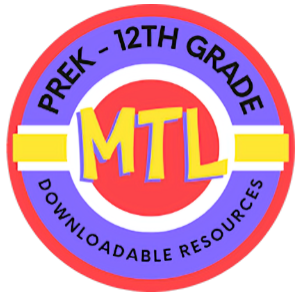Showing 1–20 of 663 resultsSorted by latest
-
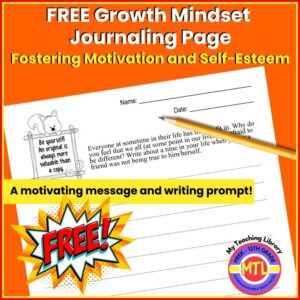 FREEBuy Now
FREEBuy NowHelp students learn, reflect and build a positive, growth mindset while completing this FREE journaling page!
-
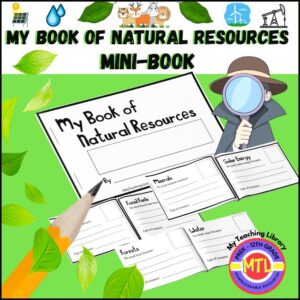 $2.00Buy Now
$2.00Buy NowGive students a fun, engaging mini-book to create to help them demonstrate what they know (or are learning) about our natural resources!
⭐Perfect to use during any student of our environment, our impact on the world, or for Earth Day!
⭐Students will have pages for the following topics:
- Forests
- Soil
- Water
- Minerals
- Solar Energy
- Air
- Plants
- Animals
- Fossil Fuels
⭐On each page, students will be asked to answer the following:
- We need (topic) because?
- What type of resource? (renewable or non-renewable)
Related product: Earth Day Activities | Cross-Curricular | Multiple Learning Styles
-
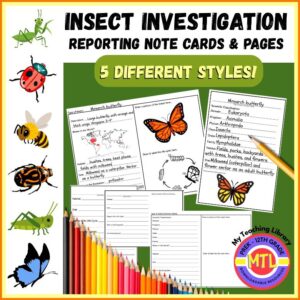 $3.00Buy Now
$3.00Buy NowStudying insects? Doing a unit on entomology? Give students a resource to help guide an investigation as well as report what they find!
This product includes 5 different styles of insect investigation note cards and pages making it adaptable for multiple grades/levels. Depending on the information that you want students to gather and report, choose the appropriate style for the assignment. Once given the note card or page, the topics on each will help guide students as to the information they need to find and complete!
Details:
Style 1: (1/2 page note cards – 2 per page) Name of insect, habitat, diet, stages of the life cycle, role in the ecosystem and an interesting fact. Students will also draw a picture of the insect.
Style 2: (1 page) Name of insect, description, where in the world (map given to complete), habitat, diet, role in the ecosystem and an interesting fact. Students will draw a picture of the insect as well as draw and label the life cycle.
Style 3: (1/2 page note cards – 2 per page) Name of insect, scientific classification, habitat and diet. Students will draw a picture of the insect.
Style 4: (1 page) Name of insect, scientific classification, where in the world, habitat, diet, role in the ecosystem. Students will draw a picture of the insect as well as draw and label the life cycle.
Style 5: (1/4 page note cards – 4 per page) Name of insect, habitat, diet, stages of the life cycle, role in the ecosystem and an interesting fact. Students will also draw a picture of the insect. -
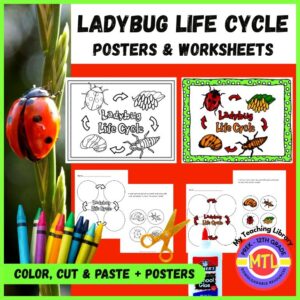 $2.50Buy Now
$2.50Buy NowA great resource to display and to get students hands-on putting together their own life cycle of the ladybug!
⭐Benefits of this resource:
- -Low prep – print and use/
- -Children learn about the ladybug life cycle both visually (poster) and in a fun and hands-on way as they color, cut and glue (worksheets).
- -Can be used to introduce the life cycle, or as a review/assessment to check understanding.
- -Encourages fine motor/scissor skills and sequencing.
- -Differentiated can be achieved by deciding if students are allowed to have the poster as a reference when completing their own life cycle.
- -Finished worksheets can be inserted into an interactive notebook.
⭐What else is included?
- -2 Life cycle posters (Color and Black/White) You can always allow students to color the b/w poster and keep.
- -2 student pages (worksheets). Students will color and cut out the 4 stages of the ladybug life cycle from the first page and glue in the correct sequence on the second page.
-
 $2.75Buy Now
$2.75Buy NowHelp your students learn all about a lunar eclipse while they create a keepsake, 10-page mini book!
⭐ What’s Included:
Five .pdf pages that students can cut in half (or can be pre-cut) to create
a 10-page mini book. This material is designed for 3rd-5th grade students and with kid-friendly explanation of lunar eclipses.⭐Students will learn:
- When a lunar eclipse can happen
- The difference between and what creates the umbra and penumbra shadows
- What must happen for a total lunar eclipse to occur
- Why total lunar eclipses can be so colorful
- The different phases of a lunar eclipse
On the last page of the mini book, students will draw their own lunar eclipse illustration.
-
Sale!
 Buy Now
Buy Now$3.00Original price was: $3.00.$2.25Current price is: $2.25.Hands on learning! This BUNDLE includes two products that will help students gain an understanding of what happens during a solar eclipse!
What’s included:
-
– A solar eclipse activity designed to help students visualize a solar eclipse through using common objects to actually demonstrate one.
-
– A solar eclipse activity designed to help students visualize a solar eclipse by creating a simple paper model of an eclipse.
-
-
Sale!
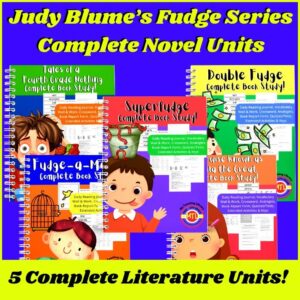 Buy Now
Buy Now$22.50Original price was: $22.50.$18.00Current price is: $18.00.Planning for your student(s) to read and study Judy Blume’s Fudge series of books? Here is a fun and engaging BUNDLE that includes unit studies for each of the books!
The 5 Fudge books covered in this bundle:
- Tales of a Fourth Grade Nothing
- Otherwise Known as Sheila the Great
- Superfudge
- Fudge-a-mania
- Double Fudge
Each unit includes:
- Daily reading journal – Students will be asked to journal new or important words, characters in that day’s reading, a summary of what happened, to make a prediction of what will happen next and additional notes.
- Vocabulary word wall (49 Words)
- Vocabulary definitions worksheet
- Crossword puzzle
- 2 Analogy worksheets (critical thinking)
- 2 Different comprehension assessments (can use one or both) – The first assessment is all multiple choice and covers basic story details. – The second assessment is more extensive and includes multiple choice, short and answer questions, an essay question, a character match and even a drawing component!
- Answer keys
-
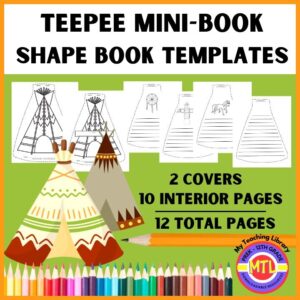 $2.50Buy Now
$2.50Buy NowThese teepee (tipi) shaped mini book template pages are designed to give students to fun, creative way to self-publish when writing about Native Americans. They can be used to publish a report, a story, a poem or even related vocabulary that they have learned.
Includes:
– 2 covers
– 10 interior pages (blank, lined pages with and without pictures – horse, dream catcher, totem pole) -
Sale!
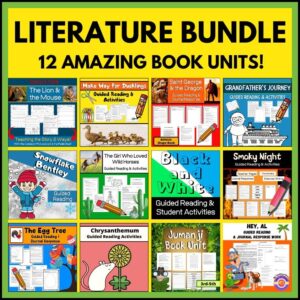 Buy Now
Buy Now$40.50Original price was: $40.50.$32.00Current price is: $32.00.This BUNDLE offers 12 fun and engaging book units, all offering guided reading questions and student activities designed to increase student interest, test student comprehension, help students use critical thinking skills and explore their creativity.
Includes the following units:
- Black and White | Caldecott Book Unit
- Chrysanthemum Book Unit
- The Girl Who Loved Wild Horses | Caldecott Book Unit
- The Lion and the Mouse | Teaching Aesop’s Fable 2 Ways
- Smoky Night | Caldecott Book Unit
- The Egg Tree | Caldecott Book Unit
- Make Way for Ducklings Guided Reading and Activities
- Saint George and the Dragon | Caldecott Book Guided Reading
- Jumanji Book Guided Reading Unit
- Hey, Al – A Guided Reading Unit
- Grandfather’s Journey | Caldecott Book Guided Reading Activities
- Snowflake Bentley Guided Reading
-
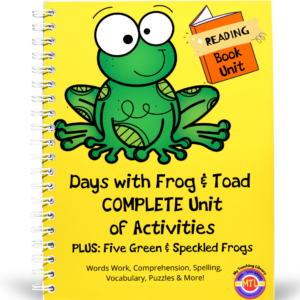 $3.00Buy Now
$3.00Buy NowA fun and complete book unit to use alongside Arnold Lobel’s Days with Frog and Toad! This 41- page book unit will provide students with word work, spelling, reading comprehension activities, puzzles plus (as an added bonus) fun with “Five Green and Speckled Frogs“!
-
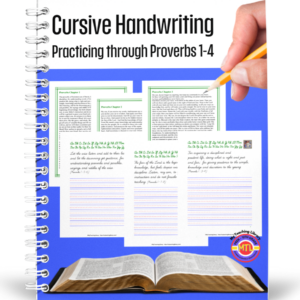 $8.00Buy Now
$8.00Buy NowThis resource has been created with three purposes in mind:
- 1st- To give students an opportunity to practice cursive handwriting
- 2nd- To allow students to read (and think) about scripture while they are practicing their handwriting
- 3rd- The resources provide an opportunity for parent/teacher and student(s) to converse about scripture and how to apply to their everyday lives.
There are 61 pages for students to practice their cursive handwriting skills. Each page will have students writing scripture, starting with Proverbs 1 and work through Proverbs 4.
-
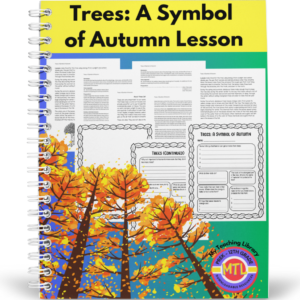 $2.50Buy Now
$2.50Buy NowA multi-age lesson to teach students (1st – 5th grades) about trees! The lesson is designed as a Fall (Autumn) outdoor/indoor activity lesson as the leaves are changing colors but can be easily converted to an indoor activity only. If using as an indoor only activity, be sure to have photos of trees to incorporate into the lesson.
Students will learn about:-
What trees provide
-
Aspects of a ‘living’ tree (how they get water, nutrients and breathe)
-
Parts (and their function) of a tree: roots, trunk, bark, branches, leaves
-
How leaves make food
-
Types of trees: deciduous and evergreen
Includes:
– Teacher lesson notes (guide)
– Student informational text
– Student activity worksheet pages
– Answer keys -
-
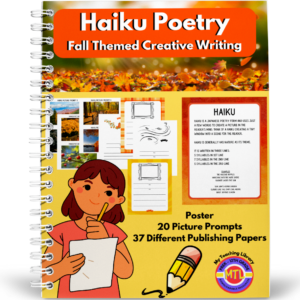 $5.00Buy Now
$5.00Buy NowHaiku is a Japanese poetry form and uses just a few words to capture a moment and to create a picture in the reader’s mind! This resource will teach students how to write a Haiku and includes a teaching poster, 20 Fall related picture prompts and 37 different publishing papers for students!
-
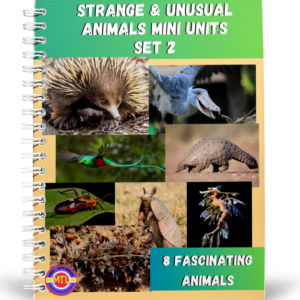 $8.00Buy Now
$8.00Buy NowStudents will love learning about 8 different ‘strange and unusual’ animals in this set of eight mini units! In each mini unit, students will learn all about one very uncommon animal, what they look like, where they live (habitat and location), what they eat, interesting facts, interactions with humans, if they are kept as pets / have been domesticated and more!
Animals in this set:
– Assassin Bug
– Moloch
– Quetzal
– Sea Dragon
– Shoebill Stork
– Armadillo
– Pangolin
– EchidnaPages include colorful photos and will keep students interested as they learn about each animal. After reading, students will have 2 notebooking pages to complete about each animal.
Also included: Taking it Further – Additional suggestions for building additional knowledge and fun extended activities!
Also, check out…Strange and Unusual Animals | Set 1
-
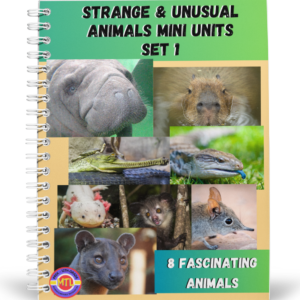 $8.00Buy Now
$8.00Buy NowStudents will love learning about 8 different ‘strange and unusual’ animals in this set of eight mini units! In each mini unit, students will learn all about one very uncommon animal, what they look like, where they live (habitat and location), what they eat, interesting facts, interactions with humans, if they are kept as pets / have been domesticated and more!
Animals in this set:
– Gharial
– Dugong
– Capybara
– Blue-Tongued Skink
– Axolotl
– Aye Aye
– Elephant Shrew
– FossaPages include colorful photos and will keep students interested as they learn about each animal. After reading, students will have 2 notebooking pages to complete about each animal.
Also included: Taking it Further – Additional suggestions for building additional knowledge and fun extended activities!
Check out: Strange and Unusual Animals | Set 2
-
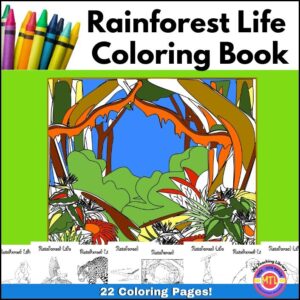 $3.00Buy Now
$3.00Buy NowStudying the rainforest? Looking for a coloring book with animals from the rainforest? This coloring book includes 22 pages ready to color. Wildlife includes: ant, anteater, fruit bat, coati, cassowary, chimpanzee, crocodile, gecko, gorilla, iguana, jaguar, macaw, howler monkey, orangutan, piranha, poison dart frog, python, sloth, tapir, tiger and toucan.
-
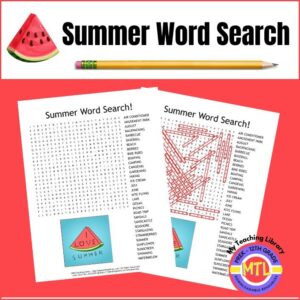 $1.00Buy Now
$1.00Buy NowA fun, summer-themed word search puzzle which includes 32 hidden terms! Benefits of word search puzzles:
- – Supports language fluency
- – Improves spelling
- – Helps improve concentration
- – Teaches patience and persistence
- – Helps develop problem-solving skills
-
Sale!
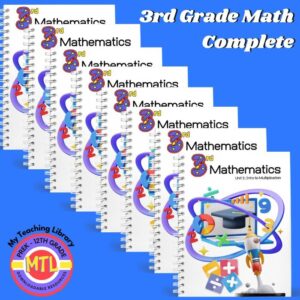 Buy Now
Buy Now$40.50Original price was: $40.50.$35.00Current price is: $35.00.3rd Grade Math Complete is an 8 unit program that covers all of the important skills and concepts typically covered in 3rd grade. Each unit includes the student and teacher edition. This resource can be used within a classroom setting, co-op or with individual students. Because it can be used within a group setting, you’ll find many activities for students to complete in pairs of 2. If you are homeschooling multiple children close in age, it would be easy to adapt and teach students together. If you are homeschooling a single child, you can easily adapt these activities through your one-on-one interaction!
You do not need to use the entire program if you are only wanting to focus on one or a few specific Math skills and concepts. If this is the case, you can purchase each unit separately.
Units:
- – Unit 1: Intro to Multiplication
- – Unit 2: Geometry: Area, Arrays and Multiplication
- – Unit 3: Reviewing Addition & Subtraction within 1,000
- – Unit 4: Relating Multiplication and Division
- – Unit 5: Fractions – Number Lines, Equivalent & Comparing
- – Unit 6: Measurement – Length, Time, Volume & Weight
- – Unit 7: Geometry – 2 Dimensional Shapes, Area & Perimeter
- – Unit 8: Review of 3rd Grade Skills & Concepts
-
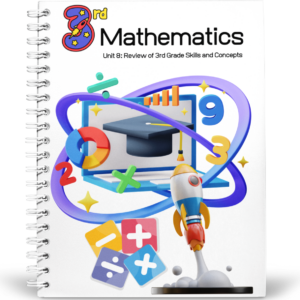 $5.00Buy Now
$5.00Buy NowIn this unit, students revisit major work and fluency of 3rd grade math skills and concepts including comparing, adding, and subtracting fractions, multiplying and dividing within 1,000, and using the standard algorithm to add and subtract multi-digit numbers.
Includes: Student and Teacher Editions
Size: 256 pages -
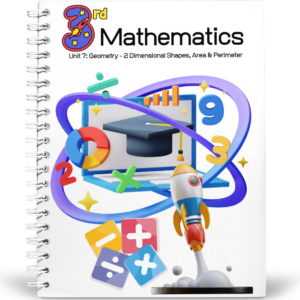 $5.00Buy Now
$5.00Buy NowIn this unit, students reason about attributes of two-dimensional shapes, calculate area and learn about perimeter. Students learn to classify broader categories of shapes (quadrilaterals and triangles) into more specific sub-categories based on their attributes. For instance, they study examples and non-examples of rhombuses, rectangles, and squares, and come to recognize their specific attributes. Students also expand their knowledge about attributes that can be measured. In this unit, students learn the meaning of perimeter and find the perimeter of shapes. They consider geometric attributes of shapes (such as opposite sides having the same length) that can help them find perimeter. As the lessons progress, they consider situations that involve perimeter, and then those that involve both perimeter and area. These lessons aim to distinguish the two attributes (which are commonly confused) and reinforce that perimeter measures length or distance (in length units) and area measures the amount of space covered by a shape (in square units). At the end of the unit, students solve problems in a variety of contexts. They apply what they learn about geometric attributes of shapes, perimeter, and area, to design a park, a West African wax print pattern, and a robot. They then solve problems within the context of their design.
Includes: Student and Teacher Editions
Size: 318 pages
